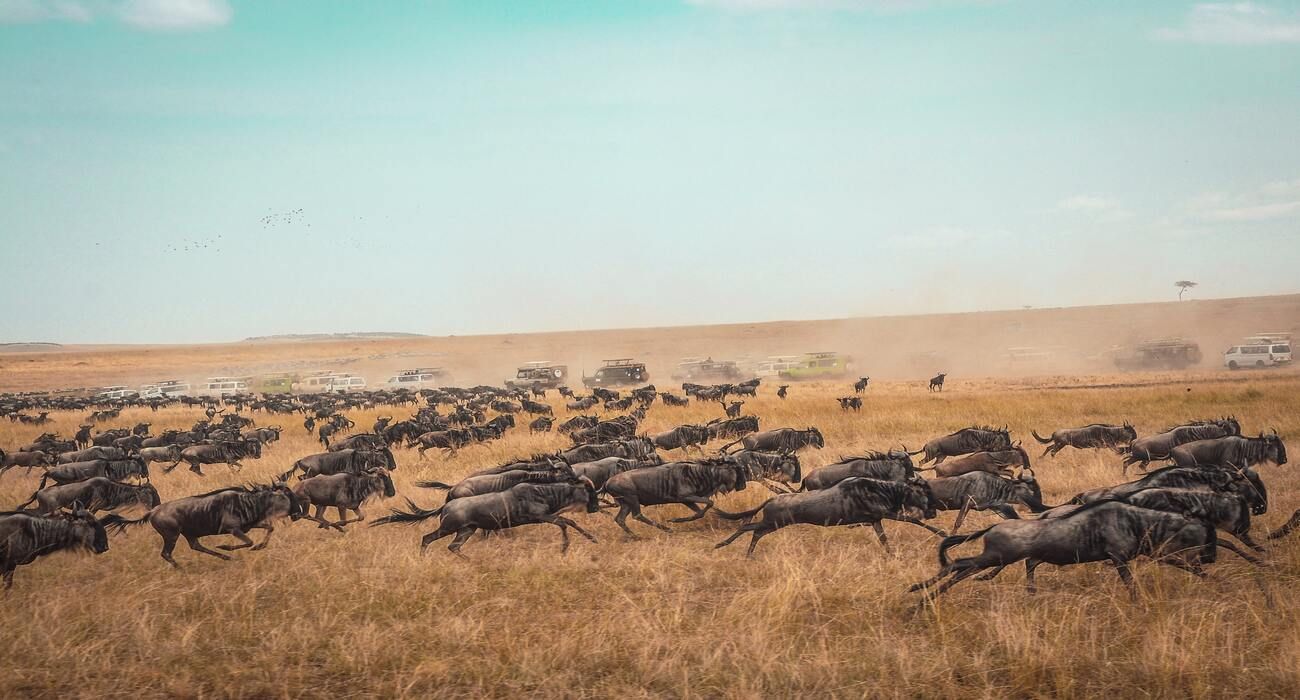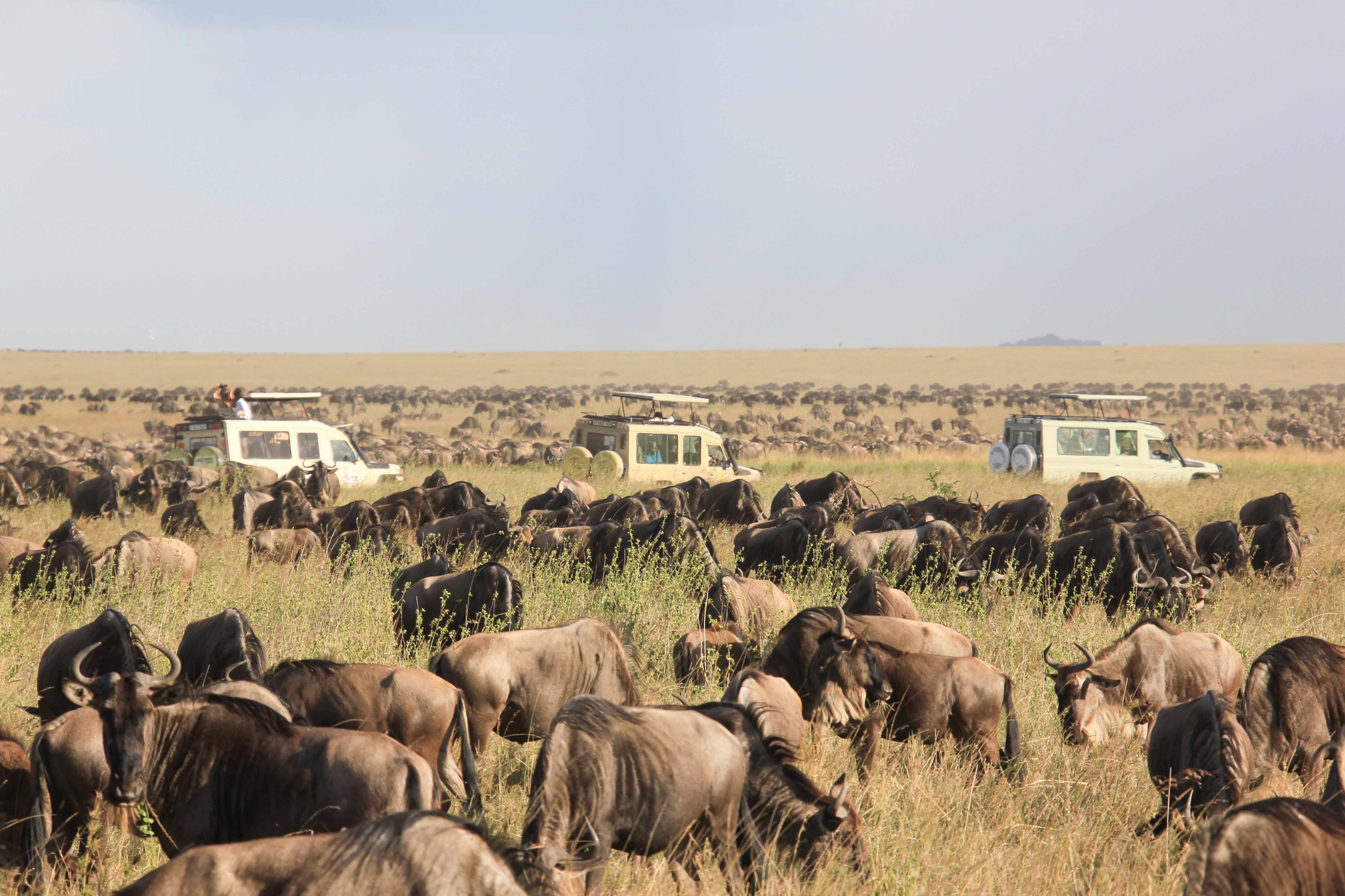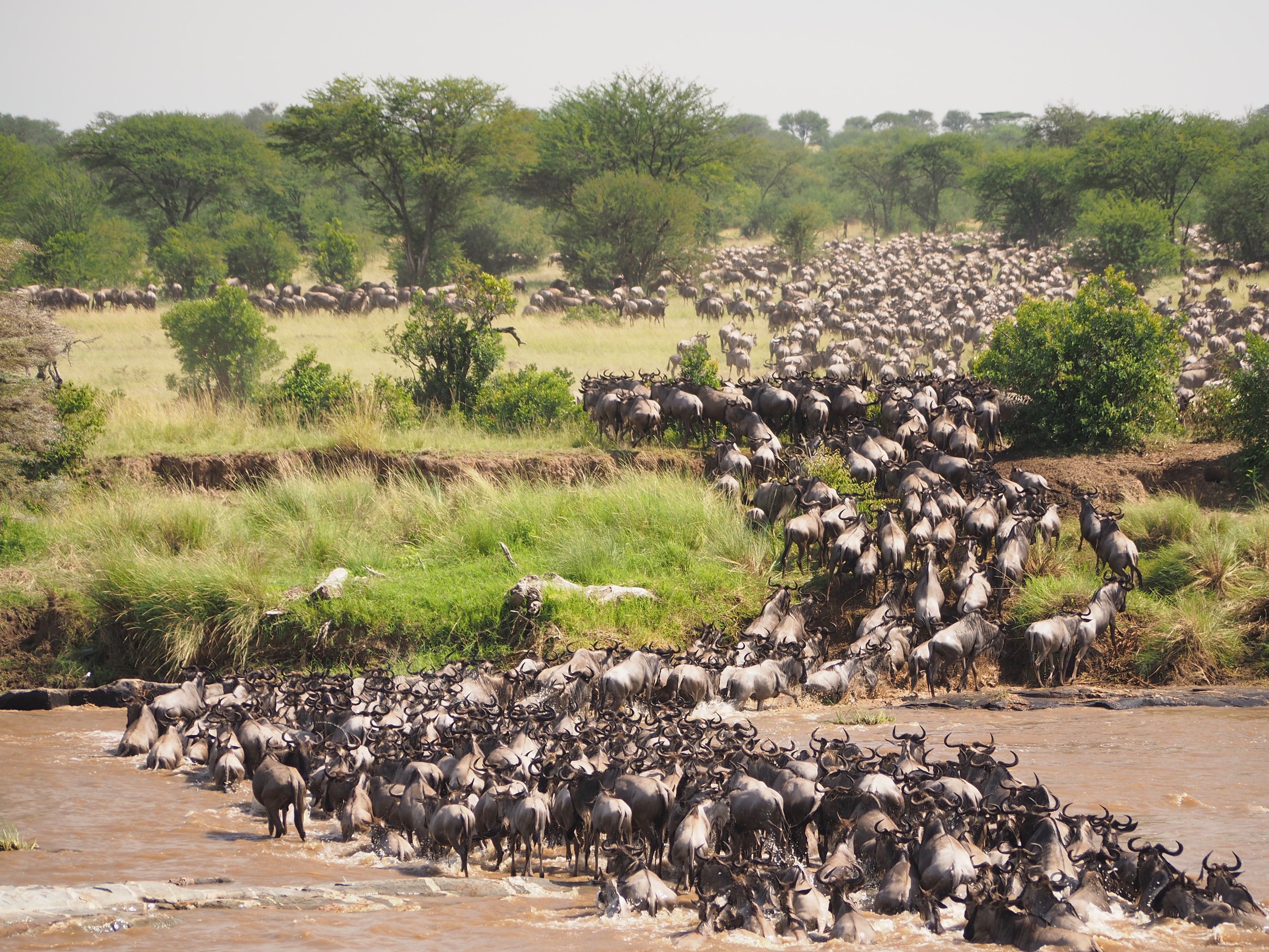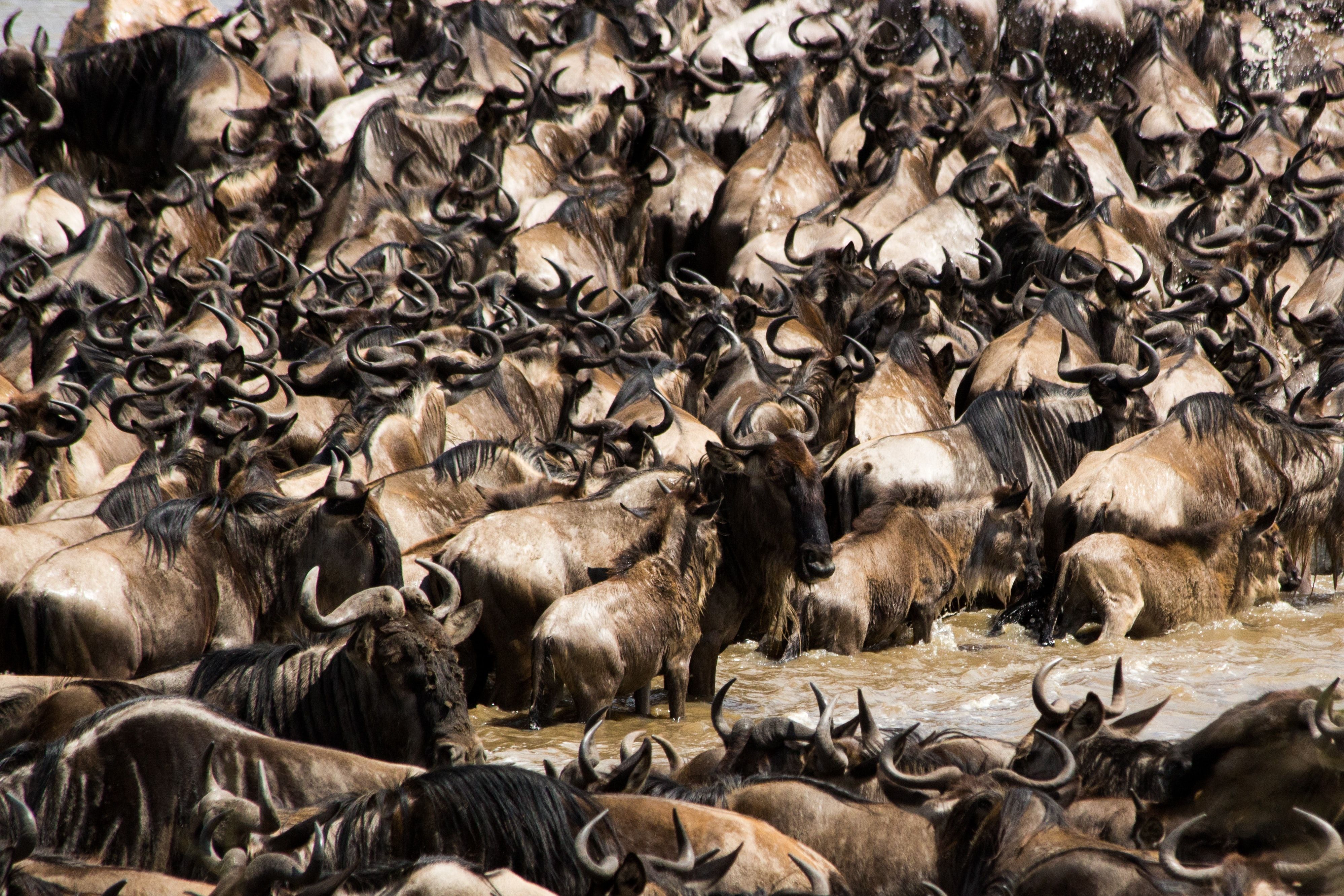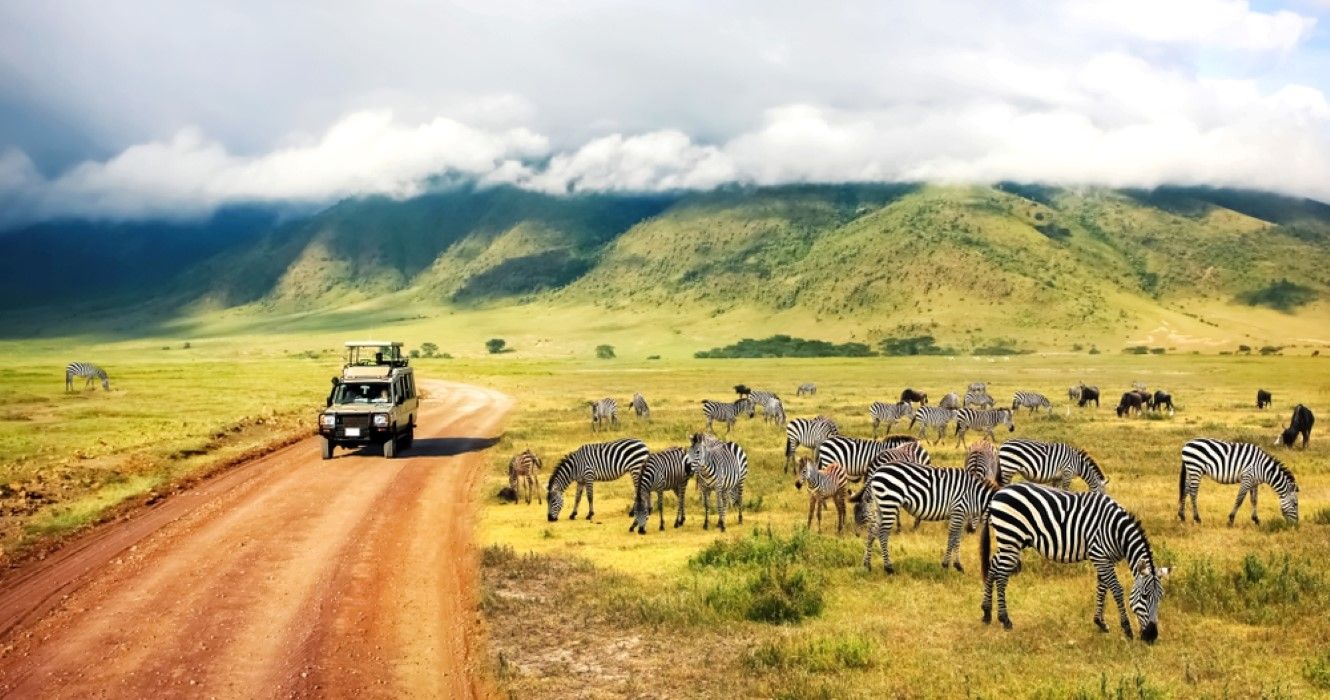Quick Links
One of the most iconic animals of Africa is the Wildebeest - almost like the great buffalo or bison of the American Great Plains. They are found throughout much of Eastern and Southern Africa but are particularly famous for the Serengeti - one of the most spectacular places in the world to see African wildlife.
There are plenty of excellent national parks to see African wildlife in Africa - in Southern Africa, two of the best are Etosha National Park in Namibia and Kruger National Park in South Africa. In East Africa (like Kenya and Tanzania), it is difficult to go on one's own self-driven safari (it is best to just book a safari tour and package). In Namibia and South Africa, it is very easy (and perhaps better) to rent one's own vehicle, travel around the country, and go on self-driven safari tours.
What To Know About The Wildebeest
Wildebeest are an antelope species of the genus Connochaetes. They belong to the family Bovidae, which includes cattle, goats, sheep, and true antelopes. They are more closely related to gazelles and oryxes and weigh up to 270 kg or 600 pounds. In the past, their populations were decimated by diseases from domestic cattle. Today their populations are largely stable.
There are two species of wildebeest - the black wildebeest and the blue wildebeest, which likely diverged around a million years ago. The wildebeest of the Serengeti is the blue wildebeest (the black wildebeest live in South Africa). Here, they are once again abundant, and some of their populations perform annual migrations in search of new grazing grounds.
Wildebeest are preyed upon by spotted hyenas, lions, crocodiles, and other large carnivores. They often graze among the zebras who add to the awareness of any predators while also listening for the warning calls of baboons. The name "wildebeest" is from Dutch, meaning "wild beast" or "wild cattle."
The Serengeti - The Setting Of The Lion King
The Serengeti is like the Yellowstone of East Africa. It is an ecosystem and geographical region that spans northern Tanzania and parts of Kenya. The region spans around 30,000 km2 (12,000 sq mi), and much of it is protected in game reserves or national parks like the Serengeti National Park.
The Serengeti is famous for its large population of lions and is one of the best places to see the iconic prides of lions. It is here that the Disney movie "The Lion King" is supposed to be set, and many of the names of the animals and the catchphrase 'hakuna matata' are pulled from Swahili - the national language of Tanzania.
The Serengeti is home to a large array of African animals, including almost all the iconic African wildlife (e.g., elephants, giraffes, etc.)
- 70: Large Mammals
- 500: Bird Species
The high levels of biodiversity are supported by the diverse habitats of the region. The Serengeti is home to woodlands, grasslands, kopjes, swamps, and riverine forests.
The Great Wildebeest Migration: One Of The Wonders Of The Natural World
Few things are as sought after for nature enthusiasts as the Great Migration (although there are other epic migrations in Africa, like the Kasanka Bat Migration in Zambia of 5 million fruit bats).
The Great Migration is an ever-moving circular migration of more than a million animals across the Serengeti ecosystem. After the wildebeest calve in the southern part of the Serengeti in Tanzania, they migrate clockwise toward the Masai Mara in Kenya (one of the top national parks of Kenya). The movement is continual until they return to where they were at the end of the year.
Along the way, they are preyed upon, and many nature documentaries are filmed of their perilous crossings of croc-infested rivers and the like.
The Great Migration In Numbers
- Wildebeest: 1.7 Million
- Zebra: 300,000
- Gazelles: 470,000
- Distance: 800 to 1,000 kilometers (500 to 620 miles)
The sight of the Great Migration is extraordinary. Imagine seeing up to 1,000 of these great animals per km2. The great columns of wildebeest are said to be able to be seen from space (unlike the Great Wall of China, which cannot be seen from space).
This migration is a story of the survival of the fittest, as only the strongest survive while the young, sick, weak, and old are taken down by lions, leopards, cheetahs, hyenas, wild dogs, and crocs. The part of the migration in the northwest at the end of the rainy season (normally May or June) is considered one of the greatest natural wonders of the world. In just 2 to 3 weeks, some 500,000 wildebeest calves are born, and during their 500-mile journey, around 250,000 die. Death is mostly from hunger, exhaustion, predation, or thirst.
Plan a journey to the Serengeti on the Serengeti website.

